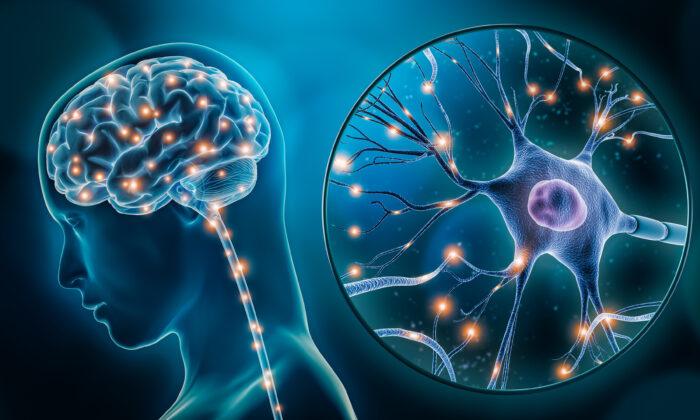It’s rare that something thousands of years old feels trendy, but meditation has managed that.
Some archaeologists date meditation
back as far as 5,000 BCE. For something so old, it’s surprising that we’re still learning so much about meditation. Spiritual practice has been central to a recent renaissance in health science that focuses on holistic ways to foster and cultivate well-being.
One of the reasons that meditation is undergoing a resurgence of popularity now is because of how much we’ve learned about its beneficial effects. In the context of a global pandemic, the timing of our understanding of the health effects of meditation couldn’t be better.
Meditation has been present in some form across cultures for millennia. Different versions of the practice have been found in ancient Egypt and China, as well as in many present-day religions including Judaism, Hinduism, Buddhism, and Sikhism. Even the act of contemplative prayer in Christianity, while it may not be the same as meditation, shares the similarities of calming the mind, letting go of negative thoughts, and engaging in reflection.
Throughout its history, meditation has changed and evolved into a number of different practices. Each practice has a different flavor; they have different focuses and employ different activities. But what they have in common is the objective of engaging in introspection and developing awareness of the present moment.
Two particularly useful forms of meditation are mindfulness meditation and compassion meditation. Each can have a potentially powerful impact on your health and may be especially powerful in the fight against COVID-19.
What Is Mindfulness Meditation?
Do you ever feel overwhelmed by thoughts racing around in your head?Mindfulness meditation can help. Mindfulness meditation is a type of meditation practice that teaches you to calm your mind and body and develop a non-judgmental awareness of your thoughts, mental states, and the world around you.
Mindfulness is simply a state where you’re paying attention to the present.
John Kabat-Zinn, a leading writer on mindfulness and creator of the
Mindfulness-Based Stress Reduction (MBSR) program, defines mindfulness as “the awareness that arises from deliberately paying attention to the present moment, without judgment.”
In a guided mindfulness meditation session, you’ll be guided to notice the thoughts, feelings, and sensations that you’re experiencing, and observe them without judgment.
Mindfulness meditation is often practiced in the way that most of us think of when we think of meditation: sitting in a quiet space with our eyes closed. But that’s not the only way to practice. Indeed, you can practice mindfulness anywhere while engaging in any activity, when you’re brushing your teeth, walking, doing the dishes, or listening to music.
The key point is that you’re actively noticing the present moment, and paying attention to your experience in a non-judgemental way.
Differences in Mindfulness Between the West and the East
Mindfulness meditation originated thousands of years ago as a contemplative tradition intended to bring awareness and attention to your immediate experience. Embedded in Buddhist tradition, mindfulness encompasses not only cognitive focus, but also social, emotional, and ethical dimensions.As they were introduced to the West, meditation practices became increasingly popular and also better studied by scientists. The version of mindfulness most studied by researchers is the MBSR program developed by John Kabat-Zinn.
MBSR has elements of the mindfulness practice from Buddhism, but it has
many differences. Indeed, some experts are quite critical of the version promoted in the West, seeing it as a kind of self-help trend. In a
Washington Post op-ed, eminent clinical psychologist
Dr. Thomas Joiner laments,
“What we might call authentic mindfulness, I found, is a noble and potentially useful idea. But true mindfulness is being usurped by an imposter… It trumpets its own glories, promising health and spiritual purity… And yet it misunderstands human nature while containing none of the nobility, humility or utility of the true original.”
His criticism isn’t that mindfulness doesn’t have any benefits, but that the simplified version of mindfulness that we often see in the West may be missing elements of mindfulness that are central to the Buddhist version: humility, a noble purpose, and the value of introspection for coming to knowledge.
The best way to practice authentic mindfulness may be through a spiritual tradition in which it is embedded.
Benefits of Mindfulness Training
So what benefits can a regular practice of mindfulness offer? There are several.In another study of 76 nicotine-dependent smokers, researchers found that those who engaged in an acceptance-based therapy that incorporated mindfulness were more successful in quitting smoking, even up to one year following the treatment.
What about physical health? Mindfulness seems to help there, too.
Harvard Medical School professor Dr. Herbert Benson found that people meditating consumed 17% less oxygen, reduced heart rates and generated more brain waves beneficial for sleep. Benson decided to publish The Relaxation Response and founded the Mind/Body Medical Institute, continuing to pioneer for meditation’s benefits on biology.
Dr Benson commented,“All I’ve done is put a biological explanation on techniques that people have been utilizing for thousands of years.”
In another
meta-analysis of 29 studies on cancer patients, mindfulness-based interventions were found to result in significantly reduced anxiety, depression, fatigue, and stress. It was also found to result in greater quality of life.
Together, these studies and others form a large body of robust evidence that mindfulness practice can contribute to improved physical and
psychological well-being.
What Is Compassion Meditation?
Mindfulness is just one type of meditation practice. Popular meditation practices include movement meditation, mantra meditation, and transcendental meditation, among others.
Compassion meditation is yet another form of meditation that is distinguished by its focus on compassionate thoughts.
Following this Buddhist-inspired logic, cultivating compassion for oneself and others can be achieved through meditation. Compassion meditation helps to overcome self-centeredness and creates empathy by connecting with the suffering of ourselves and others.
How does it work?
There are several ways you can practice compassion meditation. One is to meditate on someone (even yourself) who you know is suffering in some way. You can visualize them, with their suffering as a large dark cloud. Then, you can visualize yourself breathing in their suffering and breathing back out a warm light of compassion.
Compassion meditation is closely related to another kind of meditation called loving-kindness meditation. The difference is that where compassion meditation is focused on relieving the suffering of others, loving-kindness meditation is focused on developing a mental habit of selfless, unconditional love. Both aim to enhance positive emotional states towards others.
Benefits of Compassion Meditation for Psychological and Physical Well-being
Like mindfulness, compassion meditation appears to have a number of benefits for both mental and physical health.One study looked at the impact of an 8-week compassion meditation training on the brain. The study compared brain scans from 36 participants, randomly assigned to either compassion meditation training, mindful attention training, or a control group. Compared to the other groups, participants in the compassion meditation group were found to have an increase in amygdala response to negative images, and that was correlated with decreases in depression scores.
Other studies provide further evidence that compassion meditation seems to improve emotion regulation. For example, in a
pilot study on loving-kindness meditation, researchers found that patients with chronic lower back pain showed significant improvement in both their pain as well as the psychological distress they experienced as a result of their pain.
In another study, researchers found that a few minutes of loving-kindness meditation increased feelings of social connection with others as well as positivity towards others.
A separate research team found that a few hours of training in compassion meditation increased positive emotions and created greater activity in brain areas that are associated with social affiliation.
Finally,
a randomized control trial of 82 participants found that an 8-week intensive meditation training with features of compassion meditation led to a number of positive outcomes including reduced negative emotions, reduced depression and anxiety, and an increase in mindfulness.
Taken together, these studies suggest that compassion meditation can improve emotion regulation and help protect participants from the effects of negative emotions after viewing negative stimuli.
Why Meditation During COVID-19 May Be Especially Beneficial
So why might now be an especially good time to begin to incorporate a meditation practice into your life?Because it could help protect us against some of the negative effects of the COVID-19 pandemic. There are three reasons in particular that meditation might be useful.
First, meditation may help increase our physical health and boost our immune system, so our bodies can fight off the virus.
In one large-scale genomic study, scientists found that meditation downregulated oxidative stress, detoxification, and cell cycle regulation pathways. They also found that meditation upregulated the gene expression of 220 genes that are associated with better immune responses.
In other words, meditation may help boost your immune system, which could protect you from COVID-19 or help you recover from it faster.
Second, meditation can help protect our psychological health. COVID-19 didn’t just affect our bodies, it also had profound impacts on our mental health. For many people, COVID-19 led to
anxiety and fear, as well as caused intense sadness and grief for those of us who lost family or friends to the disease.
As described above, both compassion meditation and mindfulness meditation appear to improve a person’s ability to regulate their emotions and process negative emotions. They can
reduce stress, anxiety, and symptoms of depression. In that way, it could help make us more resilient against threats to our mental health.
Third, compassionate meditation may be a salve for the social impacts of COVID-19. One of the secondary outcomes of COVID-19 has been social strife. There have been large protests around the world as well as some increases in conflict, including a
spike in anti-Asian violence.
Compassion meditation may prove to be one effective way to combat the social distress caused by COVID-19. The central goal of compassion meditation is to understand and connect with the suffering of others. The result of the practice is feelings of social belonging, empathy, and kindness.
Using this practice deliberately as a way to develop connection to the community and interpersonal connectedness can help
reduce anxiety and depression, and increase the strength of our communities.
Getting Started With a Meditation Practice
Want to give meditation a try? You can start right now, no equipment required. You can practice meditating alone, with a teacher, using an app, or even by following a video on YouTube.
Here are some tips for building meditation into your routine.
- Start small. If you intend to make meditation a long-term habit, start by setting aside a few minutes of your day. Find a time when you’re not distracted by your other commitments.
- Find a quiet place. While you can meditate anywhere, being alone and in a quiet place can help you focus.
Both mindfulness meditation and compassion meditation offer us potent tools for cultivating wellness in our lives. They challenge us to develop focus, attention, and connection with others. Compassion meditation in particular offers a powerful way to explore the suffering that others are feeling and feel empathy towards them.
Both are particularly useful now, as we continue to combat COVID-19 and the effects it has had on our communities. Start a meditation practice today and experience the advantages it can offer you.
References
Carson, J. W., Keefe, F. J., Lynch, T. R., Carson, K. M., Goli, V., Fras, A. M., & Thorp, S. R. (2005).
Loving-kindness meditation for chronic low back pain: Results from a pilot trial. Journal of Holistic Nursing, 23(3), 287-304.
Chandran, V., Bermúdez, M. L., Koka, M., Chandran, B., Pawale, D., Vishnubhotla, R., ... & Sadhasivam, S. (2021).
Large-scale genomic study reveals robust activation of the immune system following advanced Inner Engineering meditation retreat. Proceedings of the National Academy of Sciences, 118(51), e2110455118.
Desbordes, G., Negi, L. T., Pace, T. W., Wallace, B. A., Raison, C. L., & Schwartz, E. L. (2012).
Effects of mindful-attention and compassion meditation training on amygdala response to emotional stimuli in an ordinary, non-meditative state. Frontiers in Human Neuroscience, 292.
Kemeny, M. E., Foltz, C., Cavanagh, J. F., Cullen, M., Giese-Davis, J., Jennings, P., ... & Ekman, P. (2012).
Contemplative/emotion training reduces negative emotional behavior and promotes prosocial responses. Emotion, 12(2), 338.
Kabat-Zinn, J., Wheeler, E., Light, T., Skillings, A., Scharf, M. J., Cropley, T. G., ... & Bernhard, J. D. (1998). I
nfluence of a mindfulness meditation-based stress reduction intervention on rates of skin clearing in patients with moderate to severe psoriasis undergoing photo therapy (UVB) and photochemotherapy (PUVA). Psychosomatic Medicine, 60(5), 625-632.
Scott-Sheldon, L. A., Gathright, E. C., Donahue, M. L., Balletto, B., Feulner, M. M., DeCosta, J., ... & Salmoirago-Blotcher, E. (2020).
Mindfulness-based interventions for adults with cardiovascular disease: a systematic review and meta-analysis. Annals of Behavioral Medicine, 54(1), 67-73.
Simpson, R., Simpson, S., Ramparsad, N., Lawrence, M., Booth, J., & Mercer, S. W. (2020).
Effects of Mindfulness-based interventions on physical symptoms in people with multiple sclerosis–a systematic review and meta-analysis. Multiple Sclerosis and Related Disorders, 38, 101493.
Slavich, G. M., Roos, L. G., & Zaki, J. (2022).
Social belonging, compassion, and kindness: Key ingredients for fostering resilience, recovery, and growth from the COVID-19 pandemic. Anxiety, Stress, & Coping, 35(1), 1-8.
Wang, S. C., Su, K. P., & Pariante, C. M. (2021).
The three frontlines against COVID-19: Brain, Behavior, and Immunity. Brain, Behavior, and Immunity, 93, 409-414.
Wang, Y. Y., Wang, F., Zheng, W., Zhang, L., Ng, C. H., Ungvari, G. S., & Xiang, Y. T. (2020).
Mindfulness-based interventions for insomnia: a meta-analysis of randomized controlled trials. Behavioral Sleep Medicine, 18(1), 1-9.





